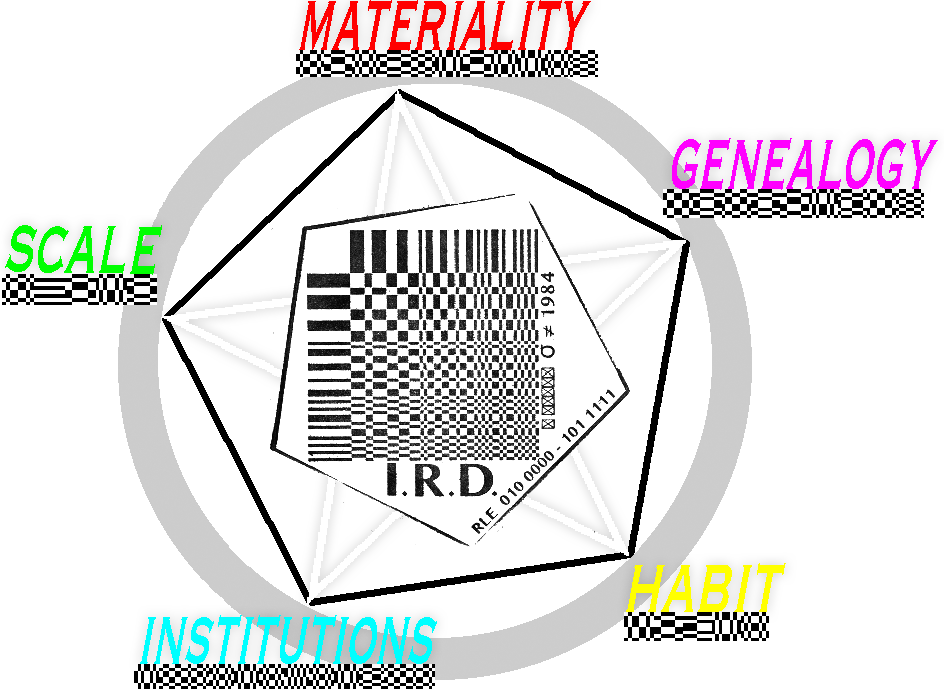8/12/2008
The Nexus between Reason and Unr3as0n[4ble]
Since the beginning of the digital era, the quest of the Renaissance seems to have re-entered the artist’s consciousness, with the aim of presenting the world in the highest level of reality. The holy grail of this search is the Holodeck of Star Trek and its main focus is finding an interface that is as small as possible, to create the highest level of immediacy.[1] The user is supposed to forget about the presence of the medium and believe in the presence of the object; transparent immediacy and immersion are important keywords.
The search for immediacy is based on the technique of remediation, a formal logic through which new media refashions prior media forms. Thus, remediation improves old media by incorporating them into new media. Along with immediacy and hypermediacy, remediation is one of the three traits of the genealogy of new media, which focuses on making the media experience as flowing, uninterrupted and realistic as possible.[2]
This concept of flow has a large theoretical basis; it has been described from many perspectives, from the flow within the machine to the flow of society as a whole. DeLanda describes flow from a broad perspective. He distinguishes between chaotic disconnected flows and stable flows of matter that move in continuous variations, conveying singularities.[3] He bases himself on Deleuze and Guattari, who describe flow in terms of beliefs and desires that lie at the basis of society. Deleuze and Guattari write that the perceived flow is something that comes to existence over long periods of time and is related to establishing conventions. Within these long periods, deviations or specific actions become rare occurrences and are often (mis)understood as an accident (glitch). Although the meaningfulness of every day life might be disclosed within these rare fluctuations, they are likely to be ruled out, because a society tends to put emphasis on the norm.[4] In Television: Technology and Cultural Form (1974), Williams describes that we are often caught up in a non-linear flow of technology and its content. He emphasizes that the process of this flow seems natural, but is in fact strictly guided by the bigger corporations and powers at work.
The flow that Williams describes can be compared to the flow that is now recognizable within the marketing mechanisms around new media. Prominent companies like Apple and Microsoft have persuaded us to believe that computers are here to help us in our search for perfection of immediacy and immersion. Computers are perceived as devices that don’t make mistakes. Software is programmed perfectly and an error has its origin within the user. This assumption has evolved into a truth and now often defines the use of the computer.[5]
Although I am hesitant to accept seemingly generalizing statements about society, I do think that these particular perspectives on flow can be very meaningful in the case of digital glitch art. Over time, conventions have concealed the users leeway to reach over the conservative use of software and hardware and the possibility to understand the error as a goal in itself. While studying digital glitch art, I noticed that glitch artists often unconsciously or deliberately contest this boarder. They often use the glitch not in (binary) opposition to what is inside the flow (the conservative use of the computer) but as a practice that takes place on the boarder. Sometimes, artists use the computers’ inherent maxims as a façade, to trick the audience into a flow of certain expectation that the artwork rapidly breaks out of. As a result, the spectator is often forced to acknowledge that the use of the computer is based on a genealogy of conventions and that in reality, the computer is a machine that can be bend or used in many different ways. To get a better understanding of digital glitch art, it would be helpful to make a (preliminary) classification of the tactics that artists use to contest the hegemonic flow. I think this classification can be based on the artists recurring effort to redefine the medium, either as an object, a material or as a platform. From the next paragraph onwards I will elaborate more on these different ways.
[1] Heim, Michael. The Metaphpysics of Virtual Reality. New York: Oxford University Press, 1993. p.122.
[2] Bolter, Jay David en Richard Grusin. Remediation: Understanding New Media. Cambridge, Massachussettes: MIT Press, 1999. p. 273.
[3] DeLanda, Manuel. War in the Age of Intelligent Machines. New York: Zone Books, 1991. p.20.
[4] Deleuze, Gilles and Pierre-Félix Guattari. Thousand Plateaus: Capitalism and Schizophrenia. Trans. B. Massumi. Londen: The Athlone Press, 1988. p. 219.
[5] Williams, Raymond. Television: Technology and Cultural Form. Hanover: University Press of New England, 1974.
Subscribe to:
Post Comments (Atom)

No comments:
Post a Comment